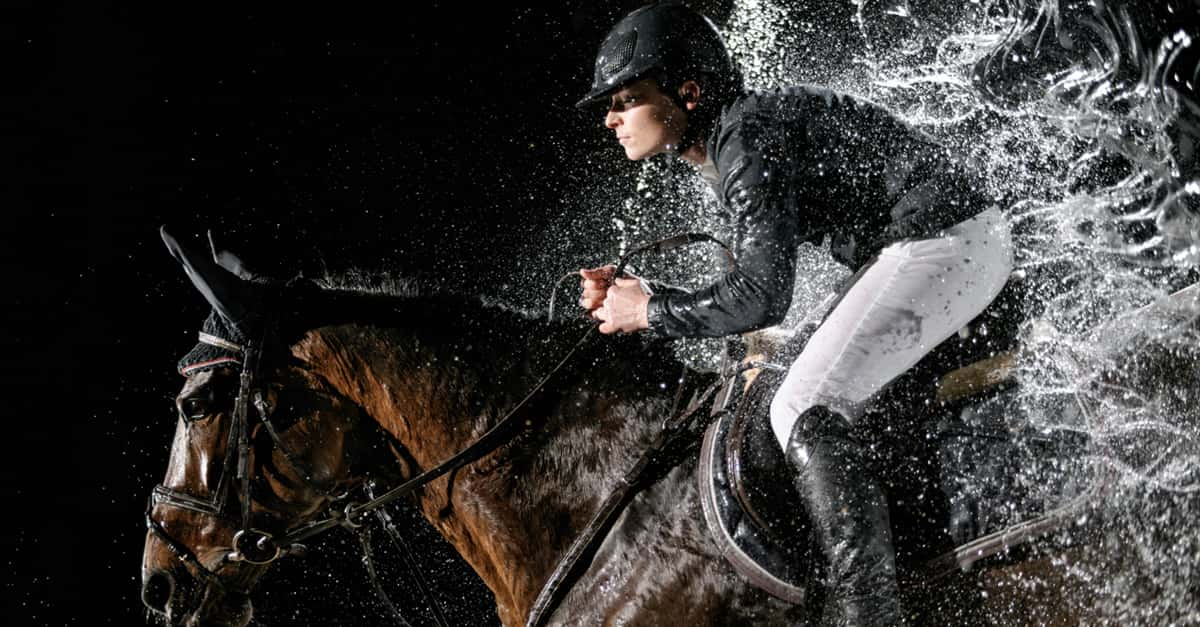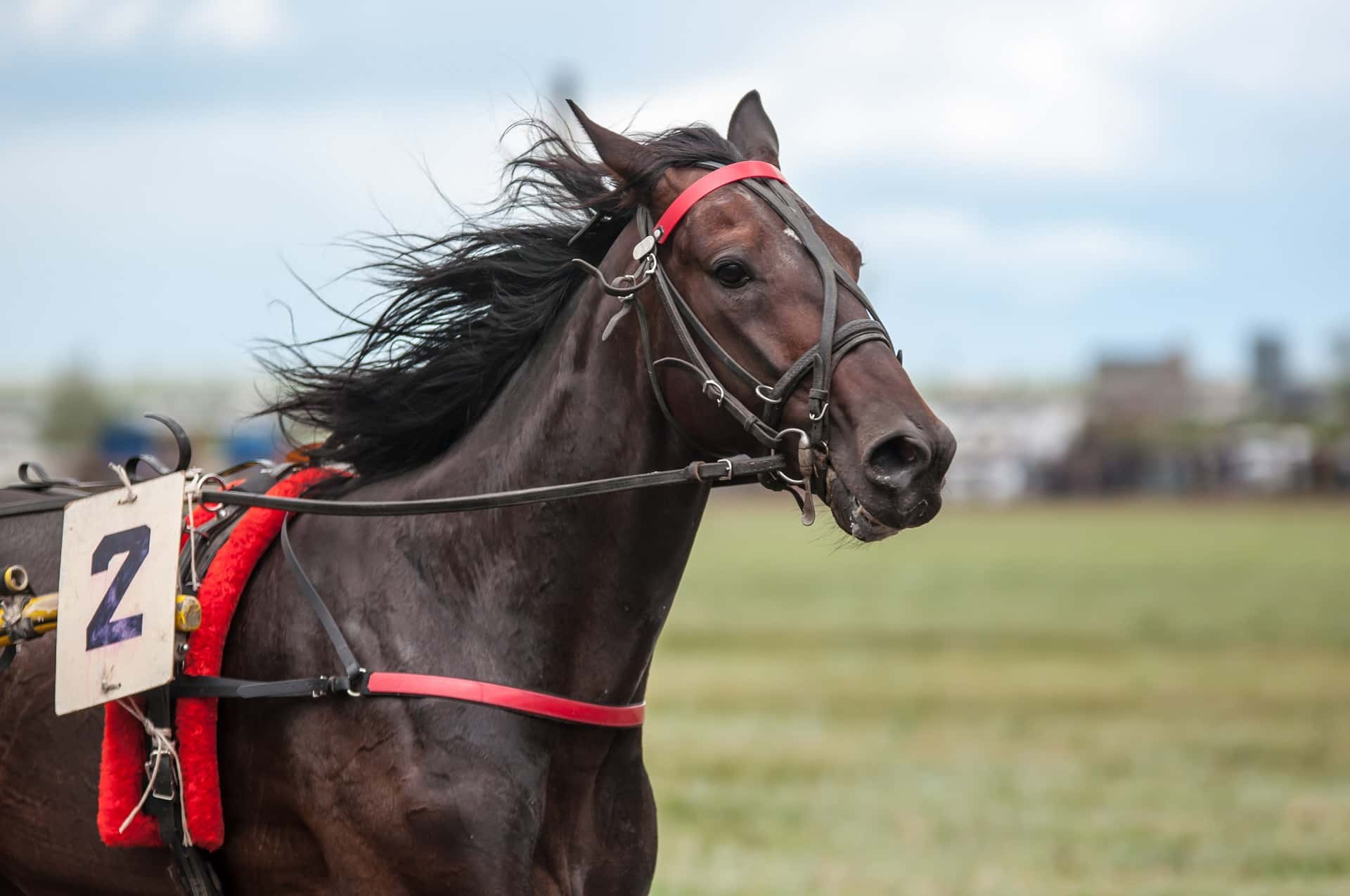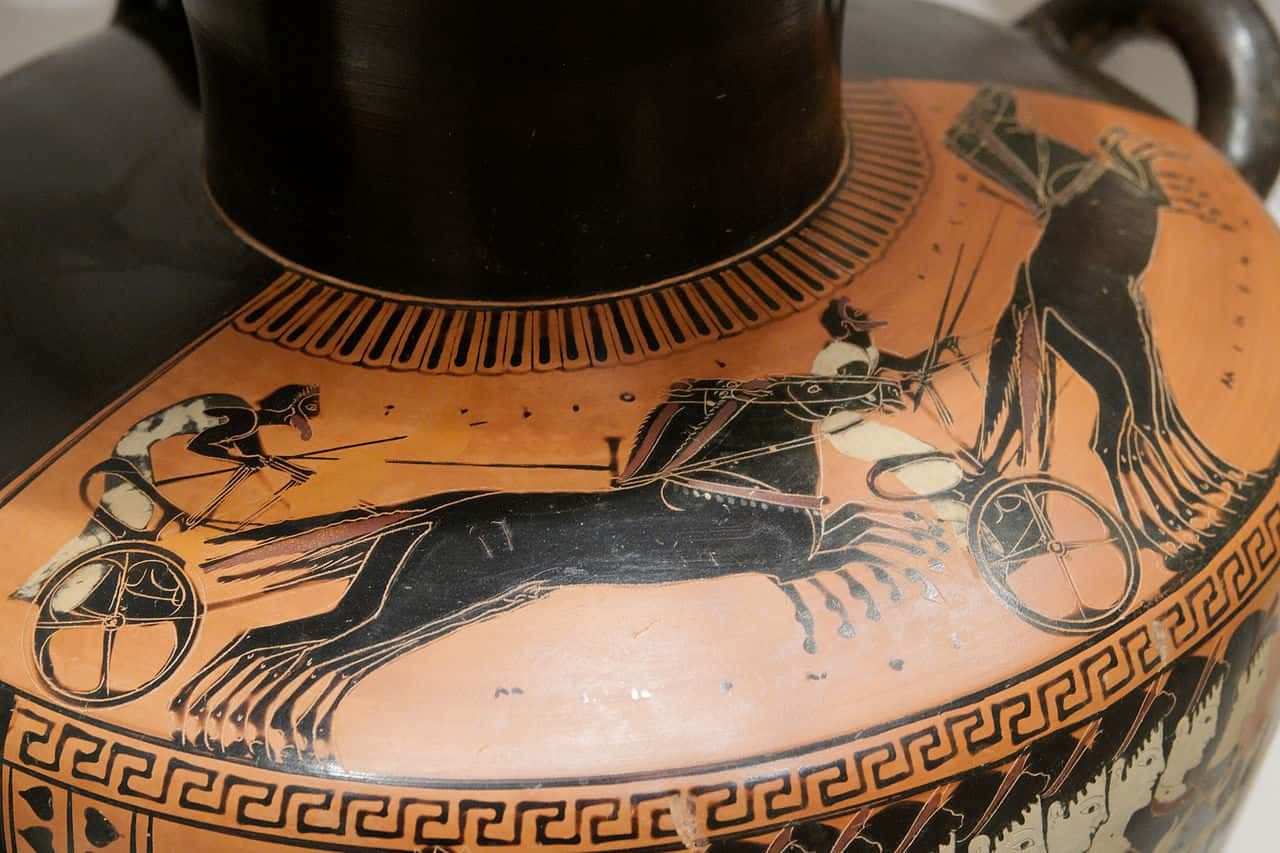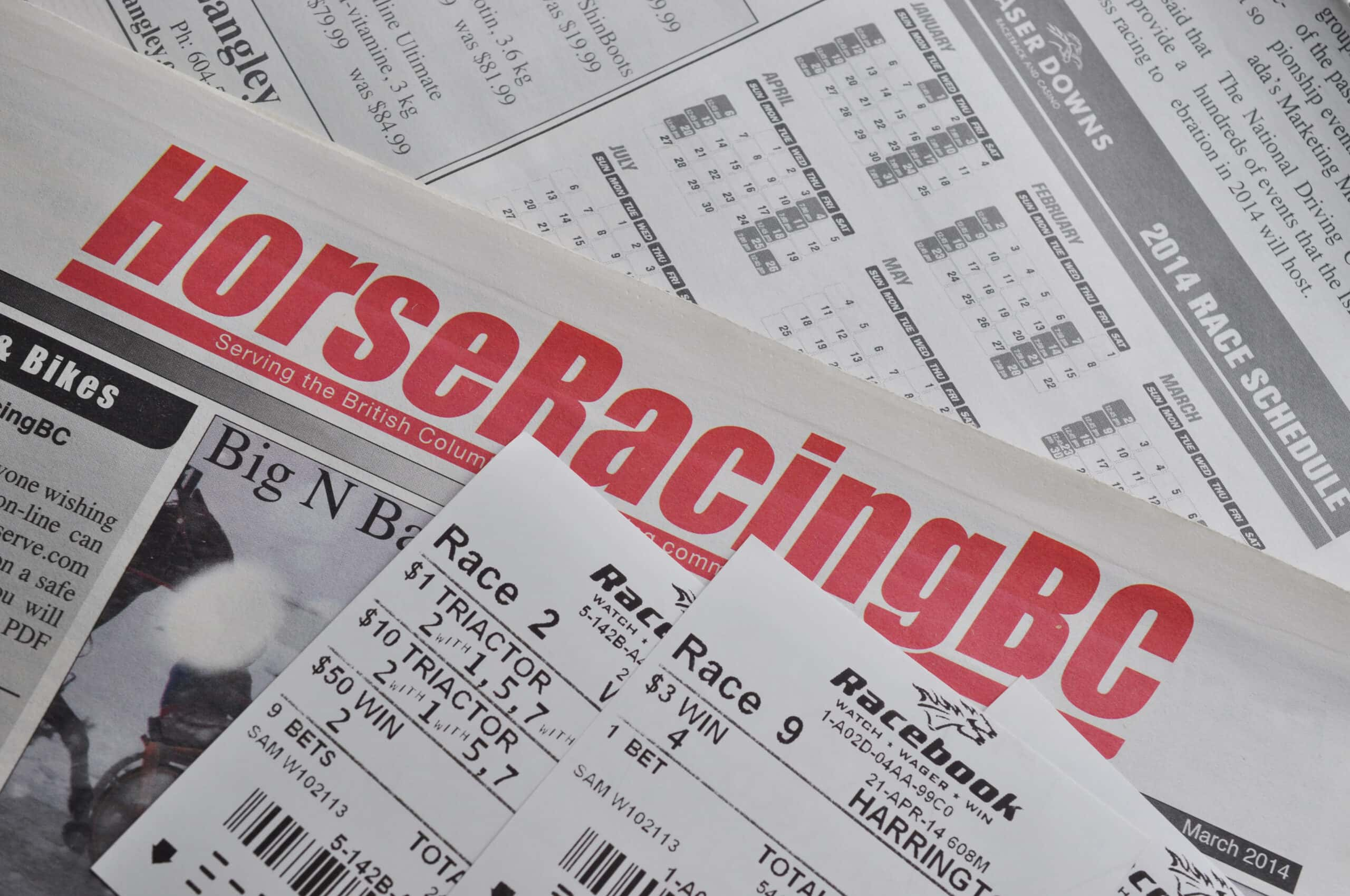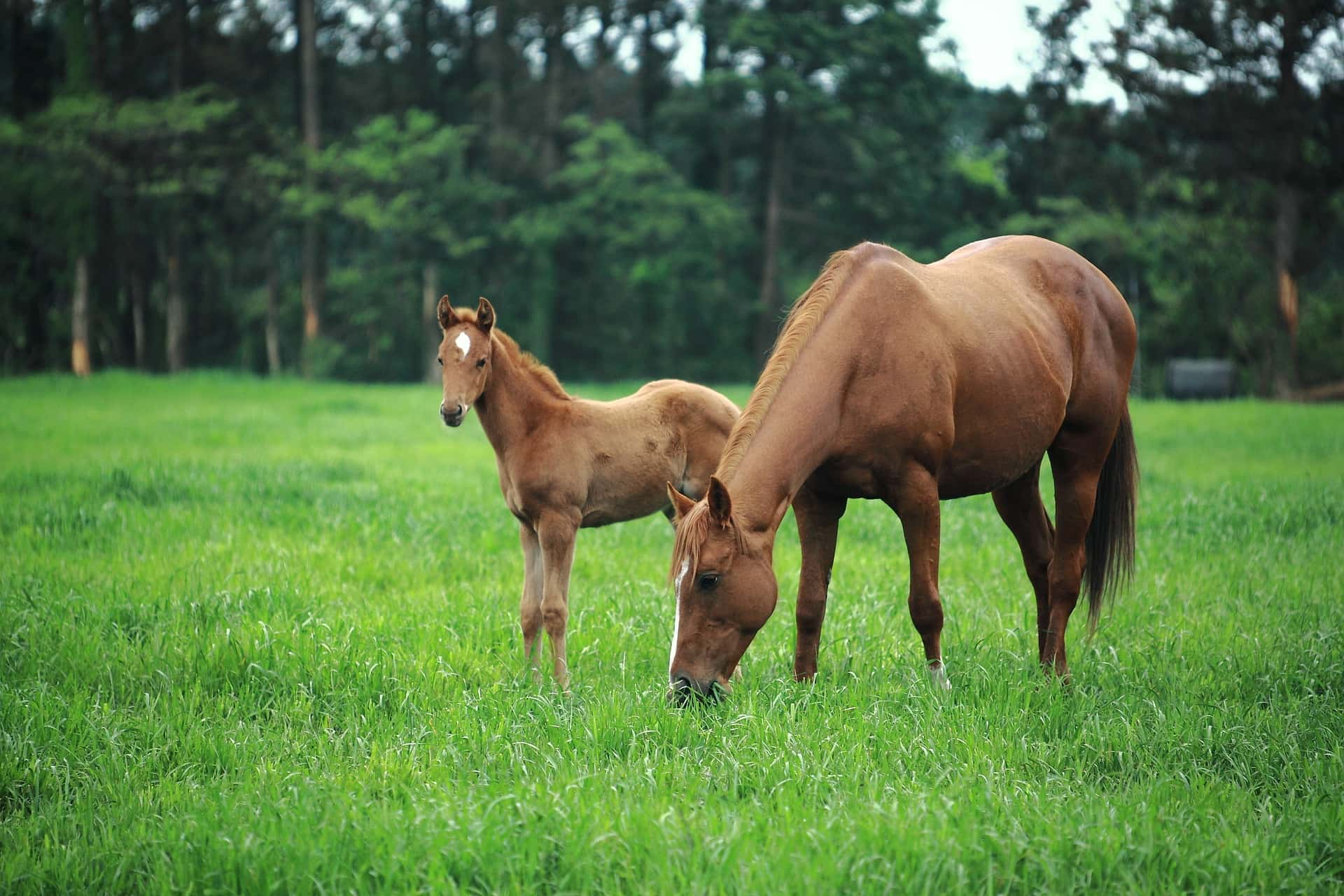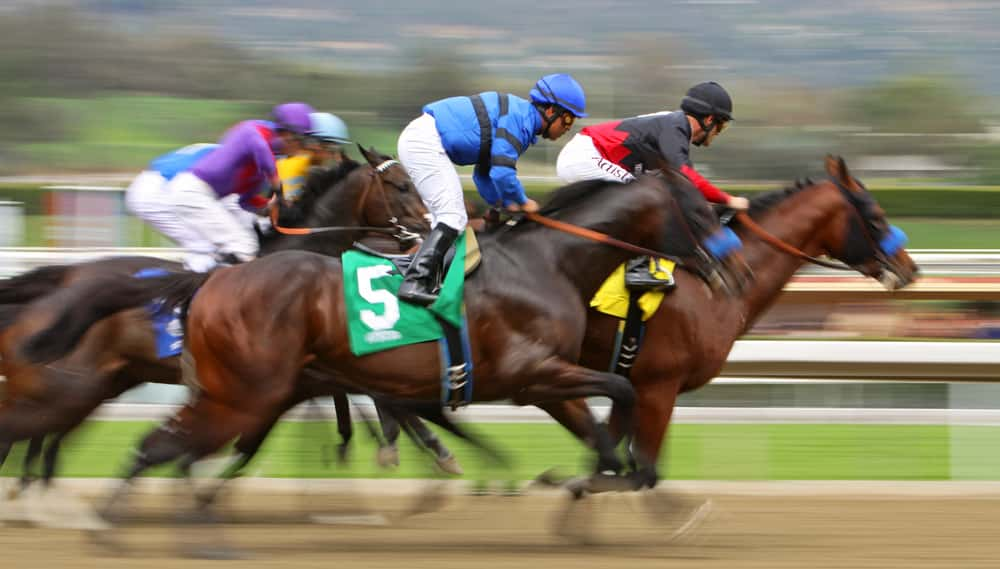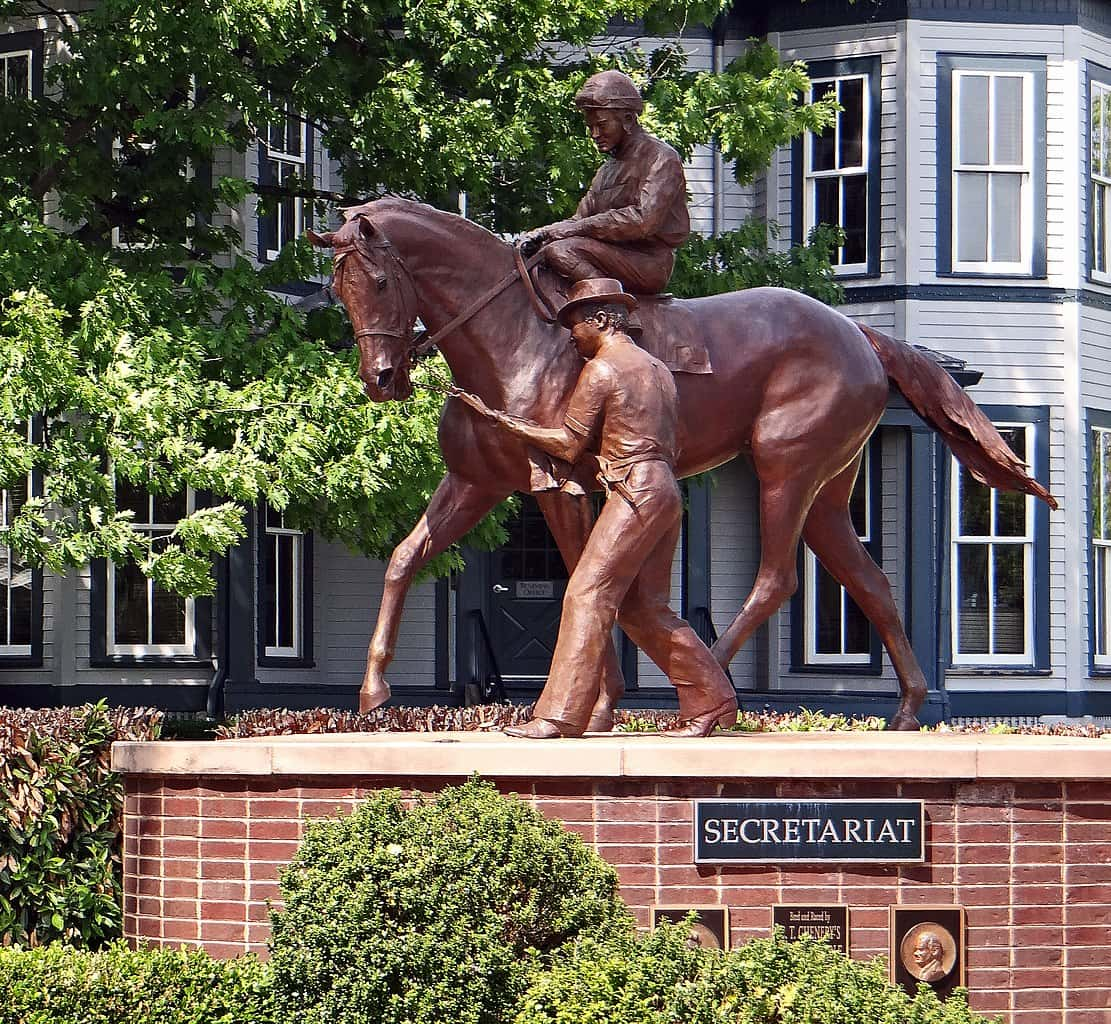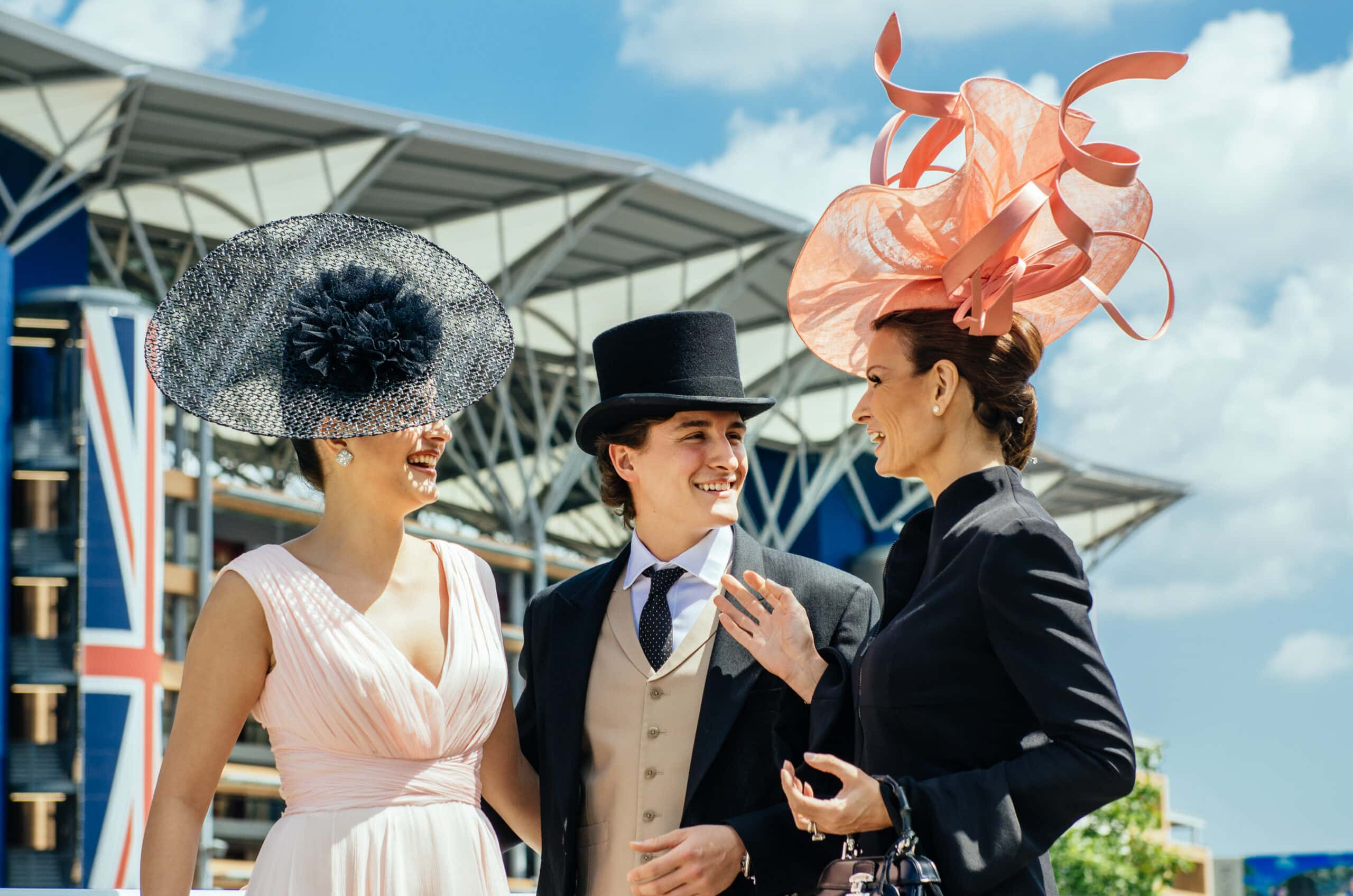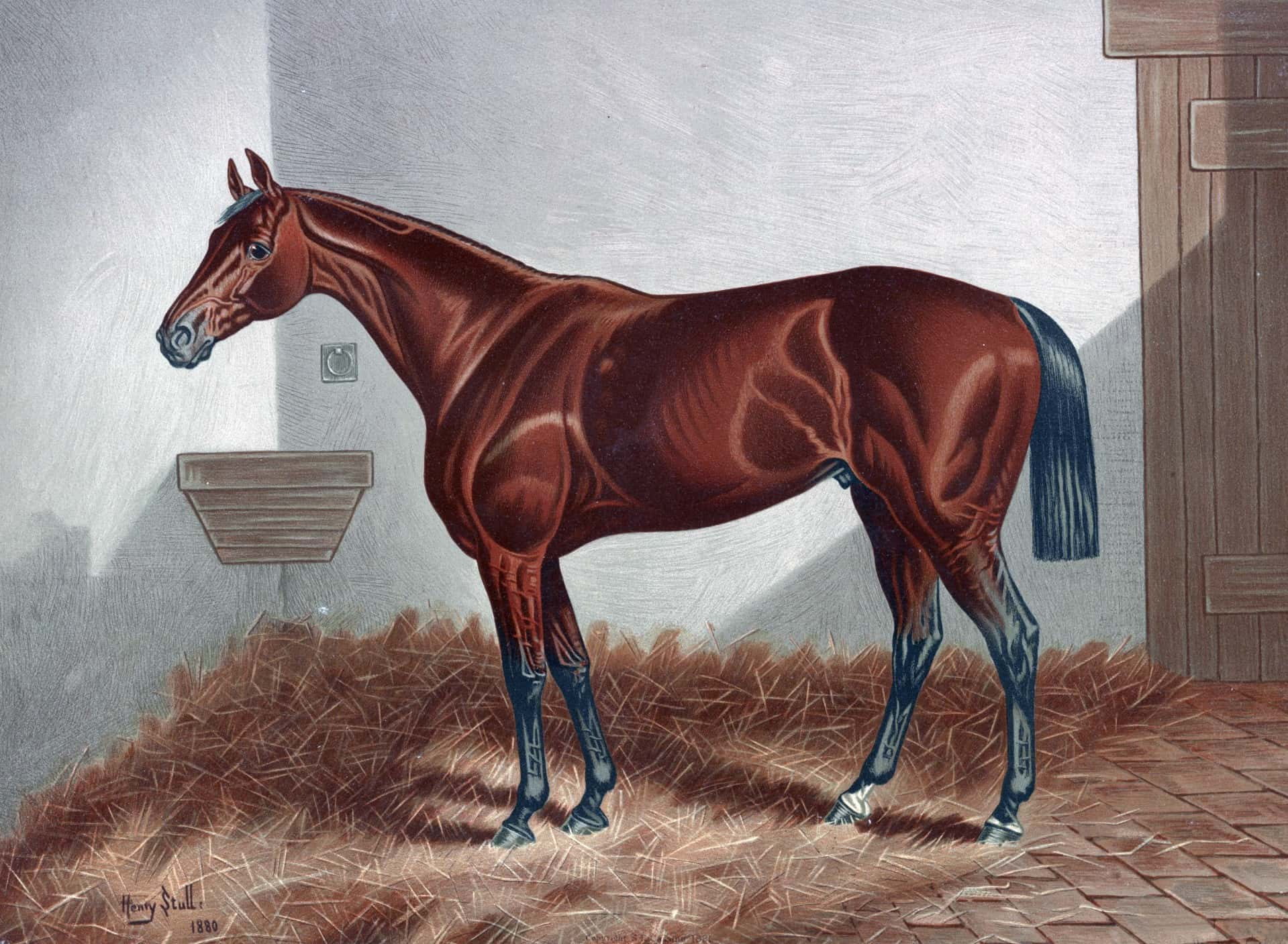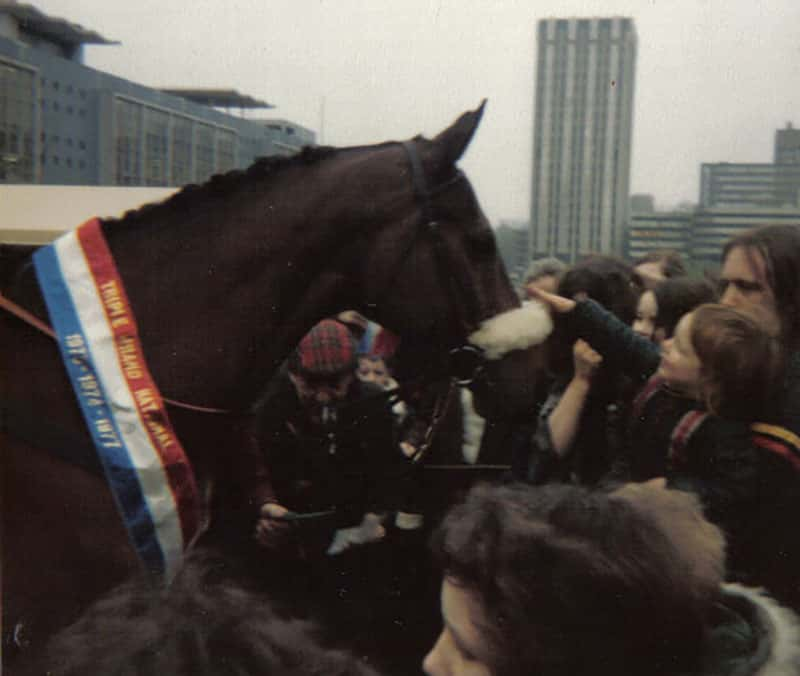One of the oldest competitive events around, horse racing is still going strong, but unless you follow it (or bet on it) you may not know it's fascinating history. Here are some of the winningest facts about this gentleman's sport.
42. Champion Exam
During the Triple Crown, the Belmont Stakes is also known as the “Test of the Champion.” This is because it is the longest of all three races, which puts horses whose main attribute is their speed at a disadvantage. Belmont is also the oldest of the Triple Crown races—it began in 1867.
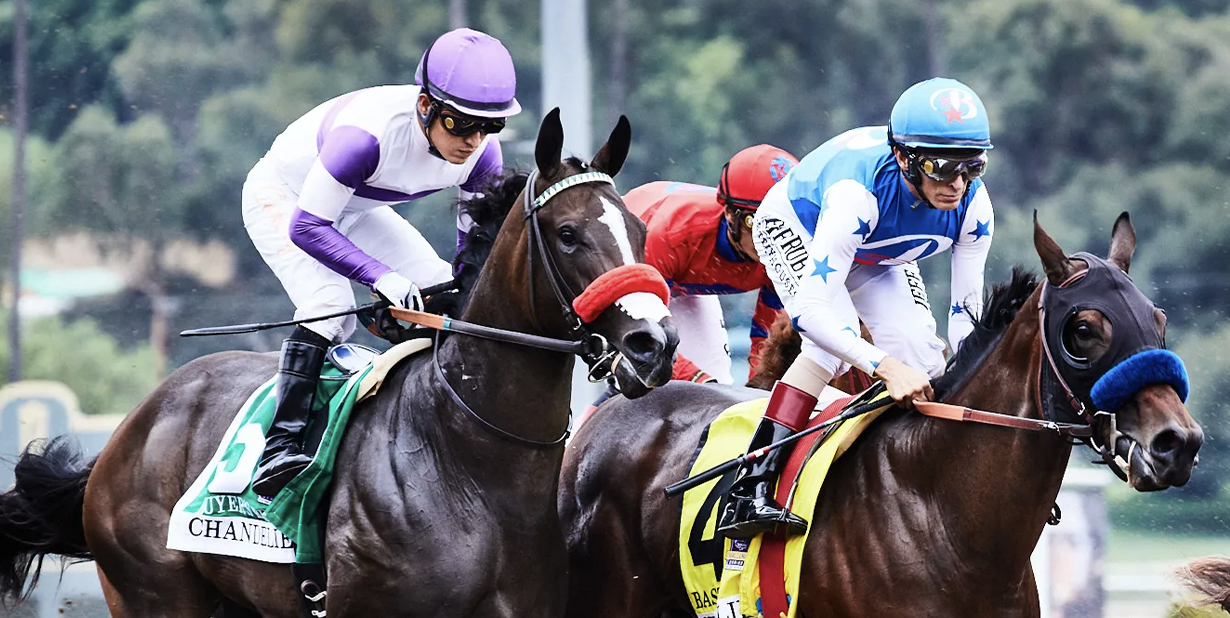
41. Flower Bed
The winning horse of the Belmont Stakes is traditionally draped in a blanket of carnations. The blanket it massive, made up of over 700 carnations, taking more than five hours to weave, and weighing in at 40 pounds.
40. American Trends
Similar to European races, the Belmont Stakes was originally run clockwise, unlike American races. It wasn’t until 1821 that the race finally adopted the standards of its home country and was run counter-clockwise.
39. Who Needs Two?
To be able to race, horses must meet inspection and be fully healthy. That doesn’t mean a few haven’t fallen through the cracks though, and the British racehorse Humorist is a famous case. After winning The Derby in Britain in 1921—the country’s richest horse race—it was discovered that he was suffering from tuberculosis and had effectively been racing (and winning!) with just one healthy lung.
38. A Horse’s Life
The average racehorse lives for around 30 years, but they usually retire around the age of 15. Considering that they are athletes, they clearly have a prime, and no horse over the age of 18 has won any races.
37. Original Races
Being from the Eurasian continent, there is evidence to suggest horses were being raced as far back as 4,500 BC on the steppe. The first actual records we have of horse racing are from ancient Greece, as there are pottery depictions of chariot racing as well as literary references from everyone's favorite tragic poet, Homer.
36. Heavy Lifting
The average horse weighs in at approximately 1,000 pounds. If you didn’t think jockeys were impressive or had a difficult job, it’s time to reconsider, as they’re riding massive animals that are traveling at a speed of 40 miles per hour.
35. Jockey Requirements
As if it wasn’t impressive enough, jockeys are famously short in height. There is no height requirement for jockeys, however, there is a weight limit of 126 pounds, which in turn results in the majority of jockeys being on the short side.
34. How Low Can You Go
The lowest recorded weight of a jockey is 49 pounds. The lightest current jockey currently racing is Giovanni Porte, who weighs 88 pounds.

History's most fascinating stories and darkest secrets, delivered to your inbox daily.
33. Gambling Sport
Due to the lucrative nature of horse racing and the subsequent gambling, a jockey is forbidden from racing a horse that they either own or have a share in because, as we all know, humans sometimes like to cheat. Penalties can be quite stringent for this, and may even encompass a period of incarceration.
32. Hurdling
In Europe, the steeplechase, or National Hunt horse race, is still very popular, and the Grand National of Aintree Racecourse outside Liverpool in the United Kingdom is the most prestigious of all. A staple in British culture, the race has a prize of £1 million, making it the most valuable race in the entire continent.
31. Betting Sum
Every year, over $100 billion is bet on horse racing. You knew it was a lot of money, but that’s just downright crazy.
30. First Kentucky Derby
The first horse to win the Kentucky Derby was Aristides, in 1875. When he ran the race, the derby was actually one-quarter of a mile longer, with a purse of $2,850. Both his jockey and trainer were African-American, as were 13 of the 15 jockeys in the entire race.
29. From Slave to Winner
Two of the first three winning Kentucky Derby trainers were former slaves. Yet, since 1891, when Dudley Allen won the Derby, no African-American riders have won the race.
28. Media Creation
The Triple Crown is incredibly famous now, but at first, they were just a trio of races. The term wasn’t created until 1930—eleven years after the first horse, Sir Barton, won the trio of races. It was coined by Charles Hatton, a sportswriter who was trying to stir up the public after the thoroughbred Gallant Fox became the second horse to win all three races.
27. Close Dates
Before the idea of the Triple Crown of races came into fashion, two of the races would occasionally be run on the same day, or within only one day of each other, which prevented any horses from winning the triple crown.
26. Triple Winners
Only 12 horses have won the American Triple Crown, with the most recent horse being American Pharoah in 2015. It had been 37 years since the last winner, and many thought that the feat may never be done again.
25. Prime Age
No horses have ever won a triple crown race back-to-back, as only 3-year-old horses are allowed to enter the race. Many horses begin racing at the age of two, and some even continue racing until they are six. The premier races are for three-year-old horses only.
24. Age Games
Regardless of when a horse is born, their birth date is universally January 1, to make the process of filtering horses by their age easier.
23. Biggest Stage
While a Triple Crown is a massive event, and the Kentucky Derby is the most famous race in the United States, the Breeders’ Cup is actually the most important series of races each year, with the Breeders’ Cup Classic being the most important, similar to the Super Bowl. The only horse to ever win two of the classics was Tiznow, in 2000 and 2001.
22. Grand Slam
Known as the most competitive race, when the Breeders’ Cup is added in with the Triple Crown, we get what is now known as the Grand Slam of Thoroughbred racing. The only horse to ever win all four all these races was American Pharoah. The horse also tied the record for largest margin of victory in the Classic, at 6.5 lengths.
21. Money Maker
The highest paying horse racing event in the world in the Pegasus World Cup in the United States, which had a purse of $16 million in 2018. A new event, the first race was won by Mike E. Smith in 2017, when he rode the World’s Best Racehorse of 2016, Arrogate, to victory. Following this victory, the pair went on to win the Dubai World Cup, which was formerly the richest race, before the Pegasus was created.
20. If You Can Do It
Diane Crump was the first woman to ride in a professional horse race in the United States, as well as the first to ride in the Kentucky Derby. In 1969, during her first race, she had to be escorted in and out of the track due to the severe hostility of the crowd and fellow jockeys. Talking about the experience, she said people were yelling at her to “Go back to the kitchen and cook dinner.”
19. Winner Winner
The winningest jockey in Breeders’ Cup history is Mike E. Smith, who has 26 wins in the annual series. And though he has career earnings of $306 million, he is still second to John R. Velazquez, who is the highest earning jockey in history, with $380 million total.
18. All Boys Club
Before Diane Crump, however, there were two other women who were set to race professionally but were forced out of their races after male jockeys began harassing them by throwing rocks at their trailers the previous year. The jockeys went so far as to even threaten a boycott if a woman was able to enter into their all boys club.
17. Gender Equality
The Triple Crown is open to both colts and fillies, meaning male and female horses, between the ages of two and four. Though fillies have won individual races in the Triple Crown, none has won the prestigious trio. A gelding, or a castrated horse, has also failed to win a Triple Crown, though they have won individual races.
16. Legend of Secretariat
Secretariat is one of—if not the greatest—racehorses of all time, his achievements are still impressive to this day. He holds the records for each of the Triple Crown races in time, and no other horse has even come close since he set them in 1973. In what is considered the greatest 20th-century race in North America, Secretariat won the Belmont Stakes by a ridiculous 31 lengths. And then in the Kentucky Derby, he somehow ran faster at every quarter-mile, which is not how that is supposed to work, as most athletes don’t keep pushing their peak speed during races,
15. Big Heart
When Secretariat was put down at the age of 19, due to chronic laminitis, examiners found that his heart was about 22 pounds. The average heart of a racehorse is about eight pounds, meaning Secretariat’s heart was 2.5 times that of a normal horse.
14. Filly’s Tourney
There is a Triple Crown for fillies called the Filly Triple Crown, in which the tracks are often rotating, as there is no real defined Triple Tiara, as it has been dubbed. After going under several different variations, the Triple Tiara was reconfigured in 2010, and no horse has won all three of the races yet.
13. What’s In A Hat
The British had a strict dress code in their early racing history and hats were included in the code. It provided a way for socialites to show off, as well as flaunting their wealth to the public. As years went by, hats stuck around and created their own tradition at the track for derbies.
12. The Original
The British Triple Crown came before the American, as the term originates from 1853 when West Australian won the 2,000 Guineas Stakes, The Derby, and St. Leger Stakes.
11. Stiff Competition
There have been 15 horses to win the British Triple Crown since the 2,000 Guineas race was first run in 1809. However, only one horse has won the crown since WWII—Nijinsky in 1970.
10. Final Leg
One of the main reasons no horses have won the triple crown since Nijinsky is that the third race at St. Leger is so long that many owners don’t attempt to race their horses at it, as it may diminish their stud value in the future. In fact, no horses that won the first two races were entered into the St. Leger between 1987 and 2012.
9. Best of the Best
The Grand National is such a valuable race because of its grueling nature. Referred to as “the ultimate test of a horse and rider,” the race is over 4 miles long, at 6.907 kilometers, with 30 fence obstacles for the horse to jump and clear. However, due to the brutal nature of the race, it has been the site of some bizarre accidents over the years.
8. Whoever Can Stay Upright
During the 1928 Grand National, only 2 horses were able to make it to the finish line, as 41 of the 42 competitors fell during the race, which was marred by misty weather conditions. A horse by the name of Tipperary Tim won the race. Before the race had even begun, a friend of the jockey had heckled him by saying: “Billy boy, you’ll only win if all the others fall down!” Well, that's exactly what happened.
7. Queen's Gambit
Another bizarre Grand National was the 1956 race when the horse owned by Queen Elizabeth The Queen Mother named Devon Loch shockingly jumped into the air and belly flopped onto the ground while leading the race during the final stretch, right after clearing the last hurdle. Being the Queen she was, she blurted out “Oh, that’s racing.” It surely is good to be the queen.
6. The G.O.A.T
The most famous horse of the Grand National was Red R., as he is the only thoroughbred to win the race an impressive three times over five years, including the most memorable Grand National, in 1973, when he came from 15 lengths behind to win. In the other two years, he took second in the race.
5. Amateur Status
Red R. held the course record time for 16 years, but it didn’t fall at the hands of a professional jockey. Instead, it was an amateur by the name of Marcus Armytage who set the still-standing record in 1990, by posting the only sub 9-minute time in the track’s history. It may seem odd, but the Grand National has a history of amateur riders, as it was conceived as a “gentleman’s competition.”
4. Rosebud
The Kentucky Derby is known as “The Run for the Roses.” This is because the winner is draped in an extravagant blanket of 554 roses. The tradition goes back to 1883, when Col. Meriwether Lewis Clark, Jr., the man who started the Kentucky Derby, after spending time at the race tracks in England and France, witnessed a New York socialite presenting roses to women at a party after the derby in 1883. It wasn’t until 1896, however, that the tradition of blanketing the winner in roses began.
3. Churchill Lands
Col. Meriwether Lewis Clark, Jr. was actually the grandson of William Clark. You remember William Clark, right? You may notice that he was named after Meriwether Lewis, as Lewis and Clark were good friends. As a child, Meriwether Lewis Clark Jr. lost his mother and was subsequently taken in by his aunt and the Churchill family. When he came up with the idea for the Kentucky Derby, his aunt donated the land to build Churchill Downs.
2. Thanks For The Name
The name Churchill Downs is derived from Clark’s notoriously bad attitude. The locals from the area where the track was built began calling the track by the name as a diminutive way to remind him that horse racing was a British tradition, and not his. The name stuck, obviously, as Americans have a way when it comes to co-opting derogatory terms.
1.Horseman who is no more
Frank Hayes was a horse trainer and stableman who sometimes raced as a jockey, however, he never won a race...while alive. In 1923, as he rode the horse Sweet Kiss, he had a heart attack in the middle of a race at Belmont Park in New York but stayed in the saddle as Sweet Kiss won the race. That gives Hayes the distinction of being the only jockey to win a race posthumously. Oh, and Sweet Kiss earned the unfortunate nickname of "Sweet Kiss of Eternal Rest" and never participated in another race.
Sources: 1, 2, 3, 4, 5, 6, 7, 8, 9, 10, 11, 12, 13, 14, 15, 16, 17, 18, 19, 20, 21, 22, 23, 24, 25, 26, 27

